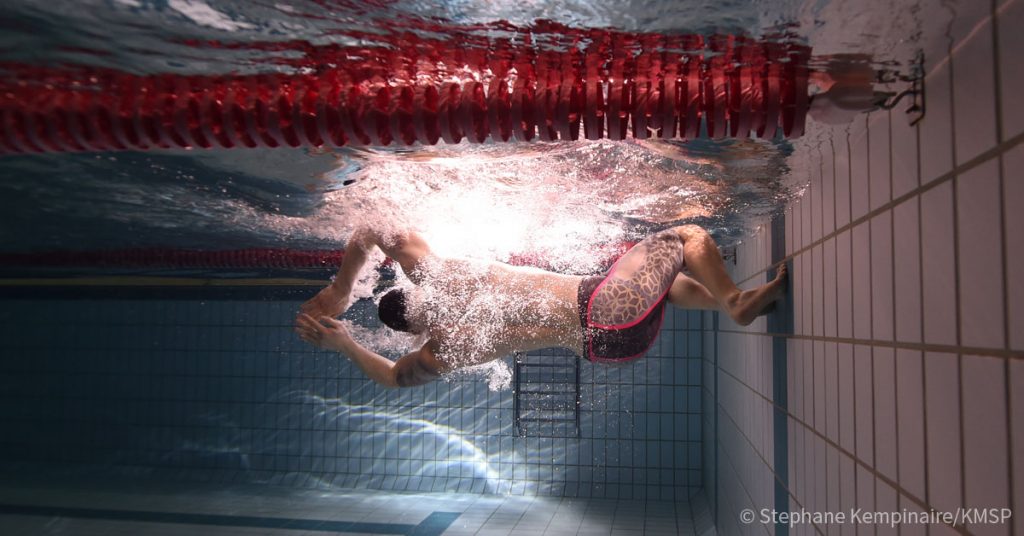As a key component of your technique as a whole, it is just as important to practice turns as it is to practice technical skills. Perfecting them takes as much work (if not more) as perfecting your stroke. For a training session to be truly effective, it is crucial that there be almost no break in movement while performing turns.
Let’s take a look at two stokes that use a flip turn – freestyle & backstroke – and provide some tips for mastering this technique:
Freestyle:
The rule for turning in freestyle is simple: you must touch the wall with any part of your body as you make your turn. While you could turn without flipping – touching the wall with your hand and then pushing off with your feet – it is much more efficient to flip in the water, using one fluid motion to keep your momentum going.
The black line plays an important role for most swimmers when it comes to turning and timing. To perfect this technique TRY THIS:
– Keep an eye on the black line as you swim towards the turn wall; when you reach the T (or a stroke after that – depending on your height and speed), perform a ½ stroke, leaving one hand at your side
– During this ½ stroke, bend your neck forwards so your chin is closer to your chest; bring your other arm to your side and rotate the palms of your hands upwards
– Perform a somersault underwater by bending your chest downwards while bringing your knees toward your stomach, helping yourself to rotate by pushing your hands upwards. As you rotate, turn your body’s axis so that you are almost perpendicular to the water’s surface
– Place your feet against the wall as you finish the rotation while moving your hands & arms into a streamline position, tucking your head between your shoulders
– Kick with your legs while coming up to the surface and swimming without taking a breath during your first arm stroke
Backstroke:
The backstroke turn is very similar to the freestyle – with a few differences in body positioning leading into the turn. Because you are facing upwards in the backstroke, the technique requires an extra body rotation (to turn your body downwards) before executing the flip turn described above. Luckily, there are tools you can use to perfect your timing to make a successful turn, including the flags placed at the 5m mark above most pools.
The 5m flags play a crucial part in effective turns during the backstroke; to perfect your timing & technique, TRY THIS:
– When you have reached the flags, count 4-5 strokes before rotating 180° (so that you are facing the black line at the bottom of the pool), drawing on the inertia from the overhead movement of your arm stroke
– While rotating, keep your leading arm straight & glide until you reach the position to somersault (without rotating around the vertical axis of your body)
– Place your feet against the wall and, still lying on your back, push off the wall – keeping your arms in streamline and your head tucked between your shoulders
– Perform 2-3 butterfly kicks before breaching the surface and continuing to swim
As the transition point between laps, the efficiency of a turn is crucial, and thus it should take as little time as possible to continue the smooth flow of your swim without interruption.
—————
